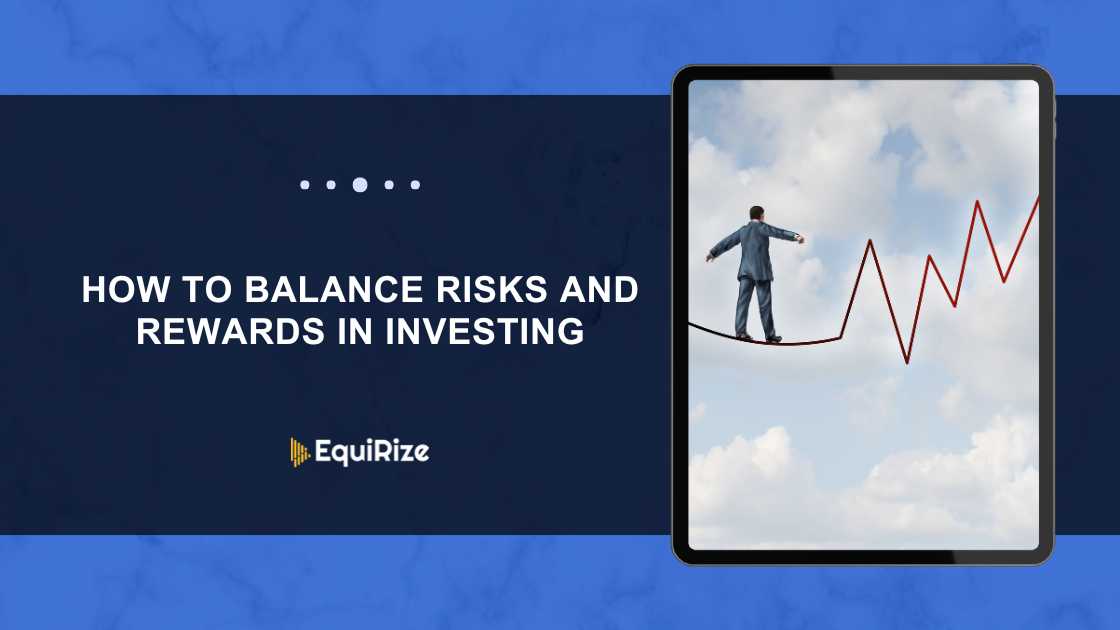How to Balance Risks and Rewards in Investing

Investing is all about finding the right balance between risk and reward. Every investor dreams of maximizing returns, but achieving this goal requires a clear understanding of the risks involved and how to manage them effectively. Let’s explore strategies to balance risks and rewards to help you build a robust financial future.
Understanding Risk and Reward
Risk refers to the possibility of losing part or all of your investment. Reward, on the other hand, is the potential return you earn on your investment. Typically, higher rewards come with higher risks, while lower risks are associated with more stable but modest returns.
Key Factors Influencing Risk and Reward
-
Investment Horizon: Longer investment horizons can absorb market fluctuations better, allowing for higher-risk investments.
-
Risk Tolerance: Your ability to handle market volatility and potential losses.
-
Asset Allocation: Diversifying your portfolio across asset classes to minimize risk.
Strategies to Balance Risks and Rewards
1. Diversify Your Portfolio
Diversification spreads your investments across different asset classes, industries, and geographies. This approach reduces the impact of poor performance in any one area.
Example:
-
Combine equities for growth potential with fixed-income products for stability.
-
Platforms like Equirize allow you to invest in a variety of regulated fixed-income instruments, offering secure and predictable returns.
2. Align Investments with Financial Goals
Define your short-term and long-term financial goals. Riskier investments like equities may be suitable for long-term goals, while stable, fixed-income products are ideal for short-term needs.
Example:
-
Use government bonds or FDs for near-term expenses.
-
Consider corporate bonds and SDLs for medium-term goals via platforms like Equirize.
3. Assess Your Risk Tolerance
Evaluate your comfort level with risk. Younger investors with a stable income may take on more risk, while those nearing retirement may prefer safer options.
How to Assess:
-
Conduct risk profiling.
-
Opt for a mix of equity, debt, and liquid funds based on your profile.
4. Monitor and Rebalance Your Portfolio
Regularly review your investments to ensure they align with your goals and risk tolerance. Rebalancing helps you maintain the desired asset allocation.
Example:
-
Shift gains from equities to safer assets like bonds during market highs.
-
Platforms like Equirize offer easy access to fixed-income products for rebalancing needs.
The Role of Fixed-Income Products
Fixed-income products are a cornerstone of a balanced portfolio. These instruments offer predictable returns and lower risk compared to equities. Options include:
-
Government Bonds
-
Corporate Bonds
-
Non-Convertible Debentures (NCDs)
-
State Development Loans (SDLs)
Why Choose Fixed-Income Products?
-
Capital preservation.
-
Steady income through interest payouts.
-
Lower market volatility.
Equirize simplifies access to these products, providing transparency and ease for investors seeking reliable returns.
Final Thoughts: Striking the Right Balance
Balancing risks and rewards is key to achieving financial stability and growth. By diversifying your portfolio, aligning investments with your goals, and incorporating fixed-income products, you can create a strategy that suits your risk tolerance and financial aspirations.
Discover secure and rewarding investment options with Equirize. Start your journey today and achieve the perfect harmony between risk and reward for a prosperous future.